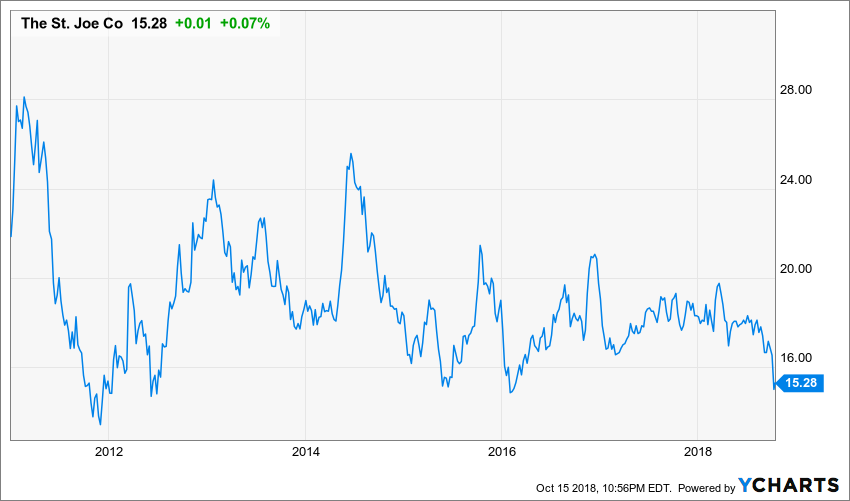It would be the best of times, it would be the worst of times…
This line – paraphrased from Dicken’s classic tale of the French Revolution – summed up the opinions of two investing giants early in 2011 regarding the real estate developer, The St. Joe Company JOE.
Bruce Berkowitz, the founder and portfolio manager of the value-oriented Fairholme Capital Management, had built up an enormous stake in St. Joe – over 25% of outstanding shares at the time (now he owns over 40%). In his mind, St. Joe was sitting on a veritable goldmine – literally an irreplaceable asset – bought years before at ridiculously low prices. Berkowitz surely believed that the best of times was in store for St. Joe.
David Einhorn, the youthful founder and portfolio manager of long-short hedge fund Greenlight Capital, had probably sold Berkowitz at least some of the latter’s stake; Einhorn had started “shorting” St. Joe’s shares five years before, in 2006. In Einhorn’s opinion, the assessed value of St. Joe’s property holdings was hugely inflated; he surely thought that the company was set for the worst of times when market participants learned the true value of the land.
A friend and colleague who covered St. Joe for Morningstar had assessed the company’s situation and had come down in the “best of times” camp. My desk was adjacent to his, so I had a front row seat during his combative call with Mr. Einhorn and several of Greenlight’s analysts.
After the call, my friend, exasperated, asked me what I thought.
“The crux of your valuation is that even though demand for St. Joe’s land is slack right now, the environment will normalize over time. Because the company’s balance sheet is clean and the operations lean, if the company sits on the land long enough, it will generate the value.”
“That’s right,” he said.
“What if the value of that land actually decreases over time? After all, most of its developments are on Florida’s Gulf Coast. As sea levels rise, many of those plots may have to be abandoned or costly protective measures will have to be implemented.”

Figure 1. St Joe’s developments in 2011. Of the developments shown, WindMark was the property that St. Joe’s management discussed as having the greatest growth potential. Source: Greenlight Capital presentation, retrieved from https://valuehunter.wordpress.com/
My friend, an insightful and intelligent analyst, considered the idea seriously, but people sitting nearby howled with laughter that I would bring up such a pie-in-the-sky, impractical topic as climate change.
To be honest, this old exchange had been completely wiped from my conscious memory until Hurricane Michael struck the Florida panhandle as a powerful Category 4 storm last week. Michael clocked in as the third most intense storm ever to hit the United States as measured by central atmospheric pressure.
The destruction shown in the photos of Mexico Beach, Florida – which received a full-on blast from the eyewall of the storm – remind me of those taken of Hiroshima after the atomic bomb blast. Indeed, they should: the energy generated by Michael was more than 200 times greater than the total electrical generation capacity of the entire world.
Mexico Beach, it so happens, is just 11 minutes by car from the sales headquarters of St. Joe’s jewel in the rough – WindMark – according to Bing Maps. The residents of Port St. Joe, just a bit further south down the coast, were not in for a picnic either, by the looks of the aerial footage.

Figure 2. Source: Bing
So far, the market has proven Mr. Einhorn correct. He reportedly closed his short position in 2016, booking a tidy profit for his investors.
Since then, the stock has fallen a bit further, though not monotonically.

Figure 3.
If the recent assessment of the IPCC proves correct, it is likely that a (possibly very patient) investor has about another $15 per share of profits to be earned from a short position in St. Joe.
About the time that Einhorn was building his short position in St. Joe, two climate scientists specializing in the dynamics of sea level rise, Weiss and Overpeck, published a paper forecasting that all of St. Joe’s beachfront properties would be 10-15 feet below water at high tide by the year 2100. Surely, they will have lost all of their economic value well before that.
It is the age of wisdom, it is the age of foolishness. Be a wise steward of your capital and invest in reality.
